
Review on 🔌 Frost King RC60 Black Heating Cables, 60 Feet by Jesse Runninger

De-icing cords are worth every penny
Almost everyone (where it snows) needs roof de-icing cords as they protect your roof, your home and your people. bit heavier than others and this brand works well. Potential Icing Problems (No Cords): I've seen many cases where people without cords to protect them from icing have serious problems: icy sidewalks and porches, icicles falling on people or breaking a basement window, damaged gutters, ice dams, in addition, water collects under the clapboards causing leaks or roof rot, water drips from the soffit under the eaves, and I've even seen it seep into the interior wall and overflow from the breaker panel into the garage. Correct Installation: I install these for customers and correct installation includes a thermostat controller in addition to the wires. A thermostatic controller extends the life of your wiring and lowers your energy bills, ultimately saving you more money than a controller, but most people are cheap to buy, which never makes sense. I'll show you why below. They can also be controlled via a smart light switch. Proper installation should include a dedicated switch with a red indicator light so it's obvious when it's on or off. to draw. Leaving cables plugged in in warm weather, temperatures above 45-50 degrees, or crossing and/or crossing too many cables can result in excessive heat and premature cable failure. Cables use 5W per foot so a 100 foot cable uses 500W and people usually plug it in and forget to leave it on. Running 500 watts (or more for more cords or longer cords) 24 hours a day in winter is like running 25 20 watt fluorescent tubes 24 hours a day or a 1500 watt electric heater for 8 hours a day turn on day. Length: Be sure to read the included instructions or check the manufacturer's website for proper installation. There really is no easy answer to how many feet your home needs as every application is different. The length depends on the overhang of your roof and even the pitch (pitch) of your roof. The steeper the roof, the fewer ice problems. If your roof isn't very steep and doesn't usually have snow on it, then you have poor insulation in the attic, which will actually make your icing problems worse by causing meltwater to pool at the edge, not to mention the extra buck that you pay for the heat loss. through the roof. So if you need attic insulation and have ice dams, start with deicing cord (cheaper) and then add more attic insulation. Cables should be routed just behind the outside wall to the edge of the roof and down into the gutter if you have more overhang than you need more cables per foot. Roof eaves and valleys use three or four times as much cable as other areas of your roof. In general, you only need deicing cords on the north side of your home or in shaded areas where you have ice problems, or around sidewalks. For gutters, you can make a pass across the floor, but you must run it through the downspouts or they will freeze and the water won't be able to come out of the gutter, damaging the target. If your trough is at the beginning or middle of the trough, the cable will need to be folded in half and routed down the trough and back up so it runs down the trough to the other trough or end of the trough. Downspouts sometimes need to be disassembled to allow cables to run completely through them. Metal and wooden roofs: All instructions state that they should not be used on metal or wooden roofs, apparently out of concern that wooden roofs could catch fire. and metal roofs have sharp edges that can damage cables, and metal roofs don't usually have ice dam problems anyway. Metal roofs have snow and ice that slide off in layers, so they require graduated snow/ice ledges. Cables can be run on some flat metal roofs as they can have puddles and duct leaks, but cables should not cross sharp edges.
- Simple design
- Almost never
New products
Comments (0)
Top products in 🧱 Building Materials
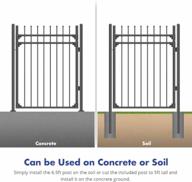
Protective And Stylish: XCEL 4Ft W X 5Ft H Black Steel Fence Gate With Anti-Rust Technology And Sharp End Pickets For Effortless Installation And Durable Outdoor Use

34 Review
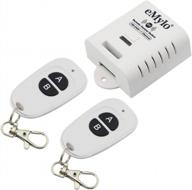
RF Remote Control Switch EMylo Smart Wireless Relay AC 110-240V 2000W 1 Channel Momentary 433MHz Module With 2 Transmitters

40 Review

Upgrade Your Stair Safety With SUSSEXHOME Polypropylene Carpet Strips - Easy To Install Runner Rugs W/ Double Adhesive Tape - Set Of 7 Decorative Mats In Brown

38 Review
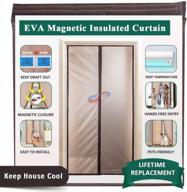
IKSTAR EVA Thermal Plastic Door Cover 38" X 82": Insulated Magnetic Curtain Keeps Cool Summer, Warm Winter For AC Room, Kitchen & Stair - Brown

40 Review
Another interesting products

🔥 MH40NG Mr. Heater F272800 40,000 BTU Multi Natural Gas Garage Heater

26 Review
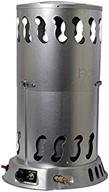
High-Performance Convection Heater By Mr. Heater Corp, Ranging From 75K To 200 BTU/HR

47 Review
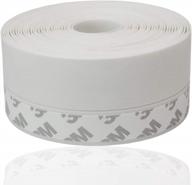
White Self-Adhesive Tape For Weatherproofing Doors And Windows - 16Ft X 1.77In (45Mm) - Includes Weather Stripping And Silicone Seal Strip For Draft Stopping And Shower Glass Protection

27 Review
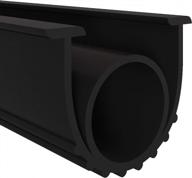
Universal Rubber Weatherstripping Kit For Garage Door Bottom Seals - Effective Replacement With Weatherproof Threshold Buffering & Sealing - 5/16" T Ends, 3 3/4" Width - 16 Ft Length

29 Review

